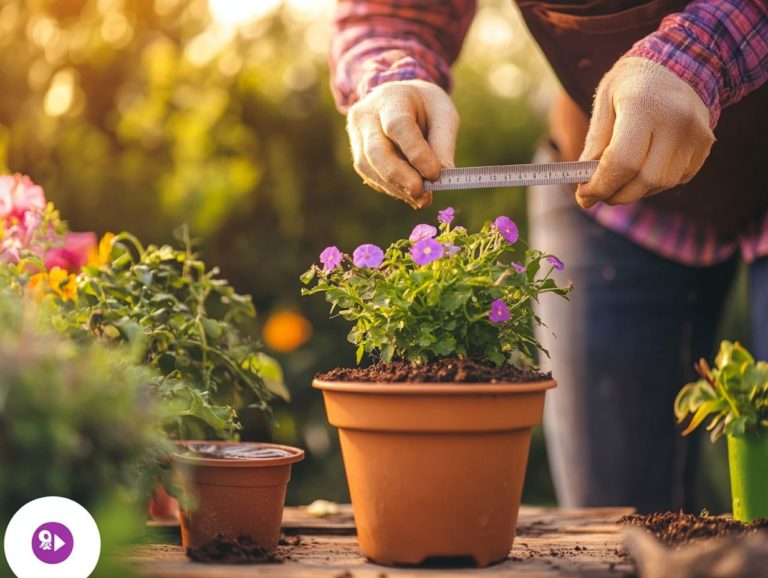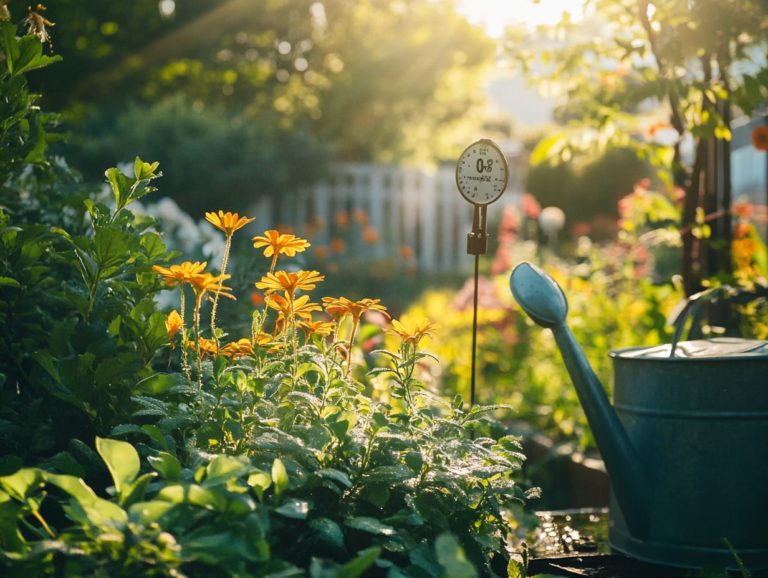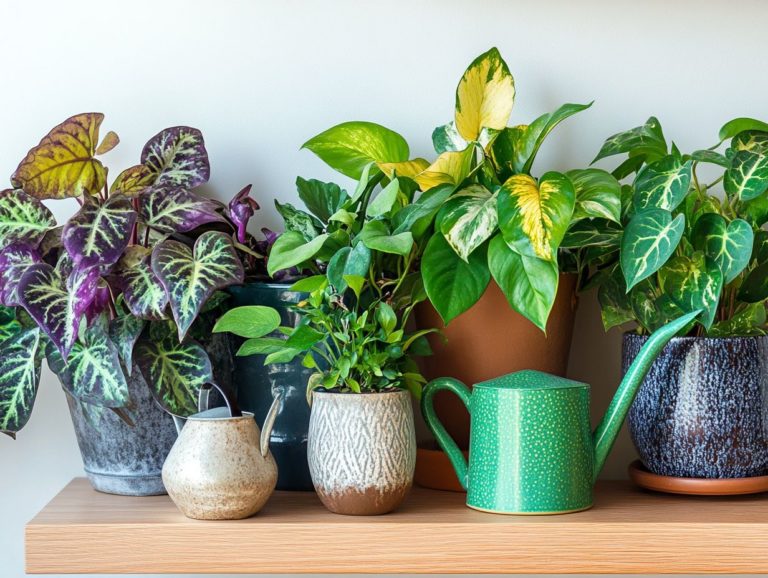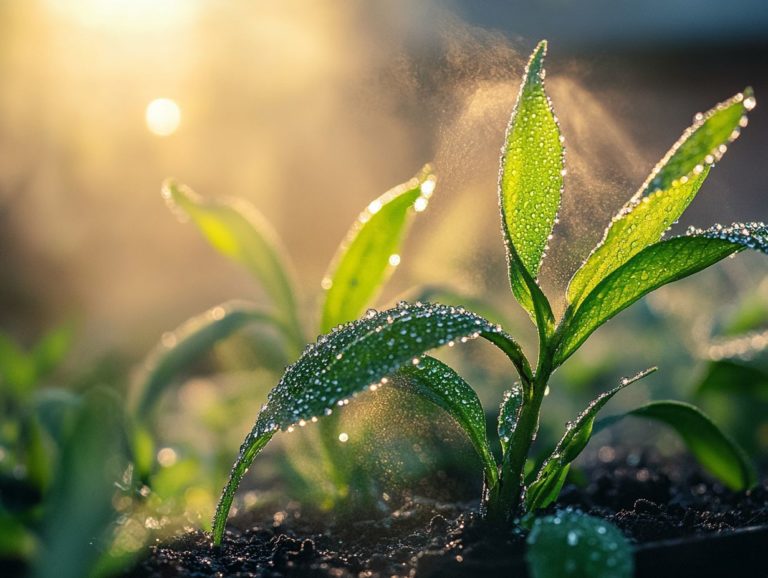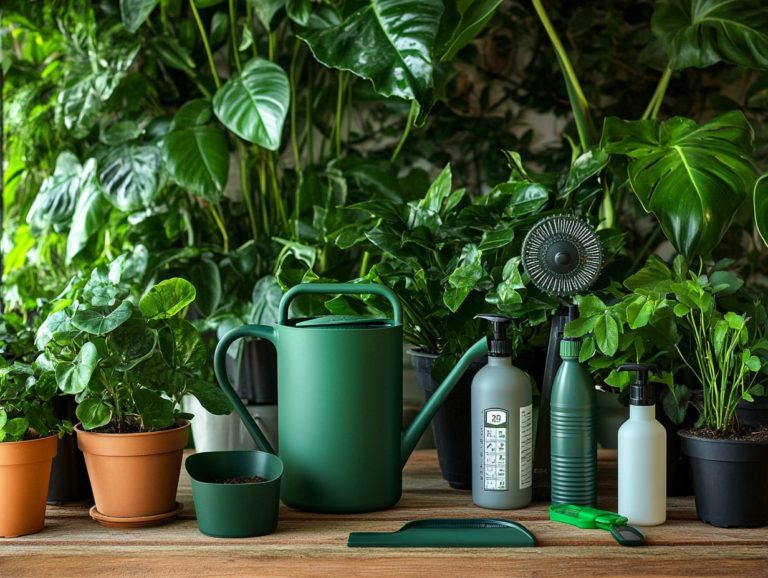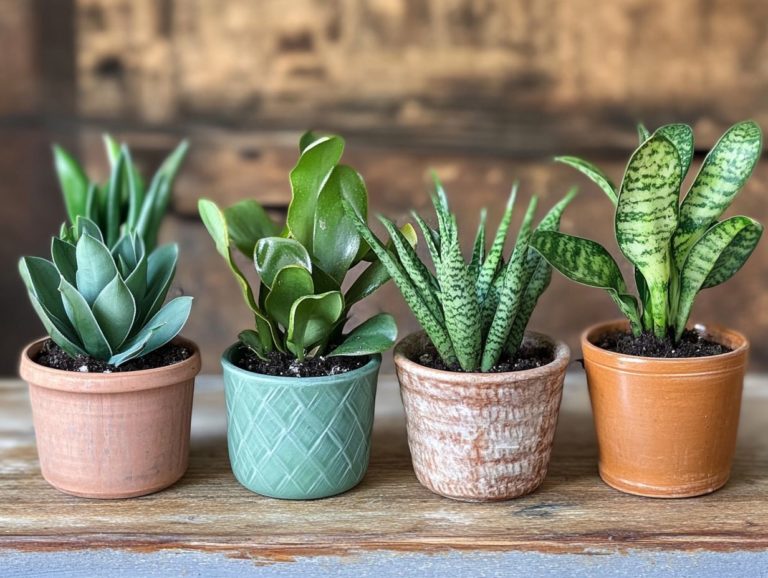Tips for Watering During Winters
Winter presents unique challenges for plants, yet many tend to underestimate the vital role that watering plays during this season.
This article delves into the importance of maintaining proper hydration as temperatures plummet, the effects of cold weather on your plants, and the best practices to ensure their health and vitality.
You ll discover the most effective watering methods tailored to various plant types, learn to identify the signs of overwatering or underwatering, and gather invaluable tips to shield your greenery from frost.
Take these steps to make your garden thrive even in winter!
Contents
Key Takeaways:

Proper watering is crucial for plants during winter. Cold weather can negatively impact their health and growth.
When watering plants in cold weather, it is important to follow best practices, such as avoiding overwatering and using the right method for different plant types.
Watch out for signs of overwatering and underwatering and take necessary steps to address them. Protect plants from frost and freezing by following simple tips.
Why Winter Watering Matters for Your Plants
Watering remains essential during the winter months, even as many plants, including those that live for many years, enter a dormant state. By grasping the specific water requirements of various plants at this time, you ensure their survival against harsh winter conditions.
Despite the dropping temperatures and slowing growth, plants still rely on water to maintain their internal processes. Effective winter watering is vital for preserving soil moisture and preventing winter drought. For insights on how to water effectively throughout the year, refer to our watering in different seasons: a guide. Both newly planted and established plants can struggle without enough water, potentially leading to issues like root rot or other stress-related complications.
The Impact of Cold Weather on Plants
Cold weather significantly impacts how your plants absorb water; lower soil temperatures can hinder their ability to take in essential moisture. During winter, when air temperatures often plunge below freezing, you might notice reduced evaporation.
However, this also creates challenging conditions for watering your trees and other plants. While they may rely on stored moisture, inadequate soil moisture levels could jeopardize their survival through the winter frost, leading to potential dehydration.
Understanding how factors like soil temperature and moisture patterns shift during this season is essential for maintaining the health of your plant species. As temperatures drop, soil can become dense and compacted, diminishing its capacity to retain water. This altered environment requires you to reassess your watering schedule; overwatering during the cold months can lead to root rot, a common and devastating concern for root systems.
By recognizing these changes, you can implement better management practices, ensuring your plants emerge in spring with vigor, ready to thrive.
Best Practices for Winter Watering
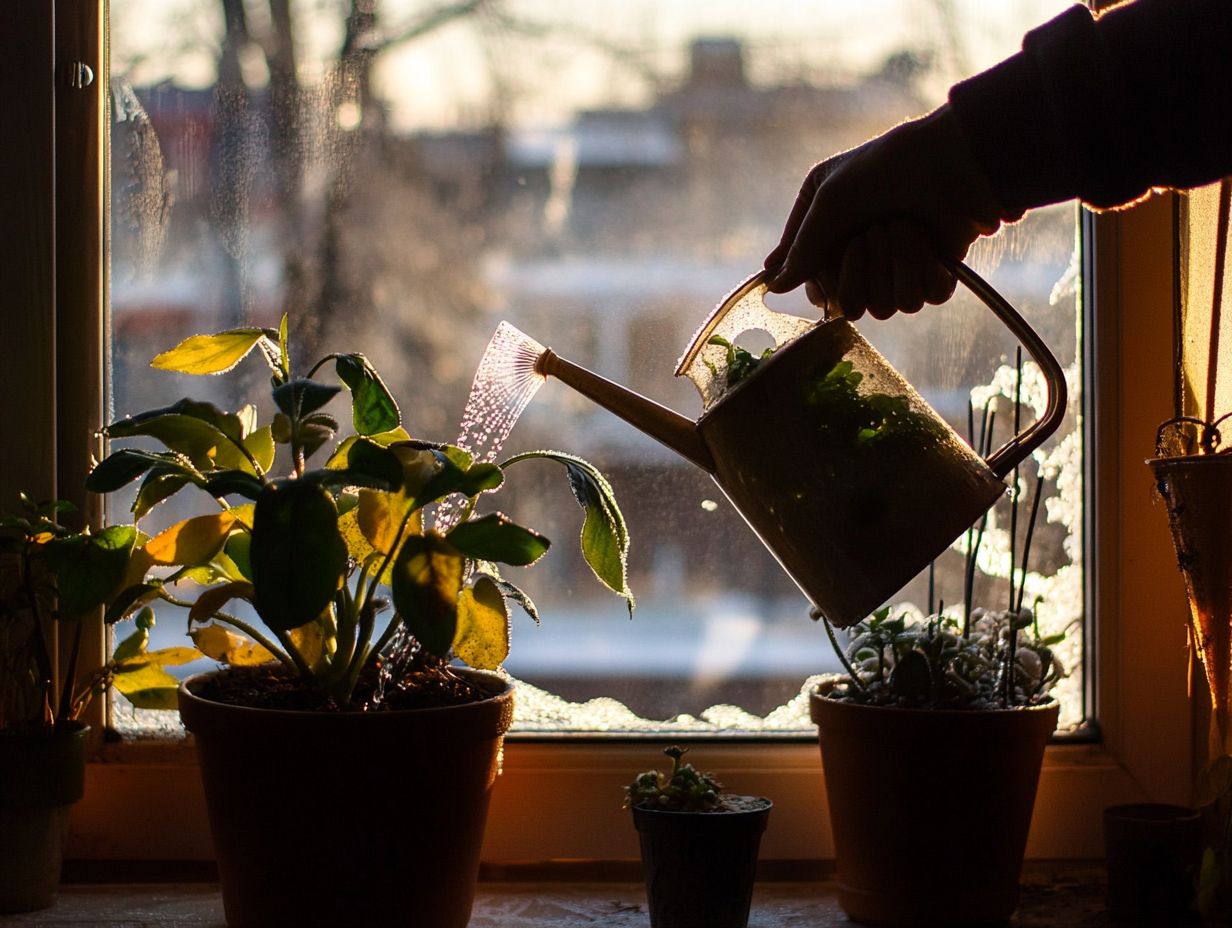
Implementing best practices for winter watering is crucial for the health of your garden, particularly in regions that face harsh winter conditions. Consistent and effective watering methods can greatly influence the survival of your plants during these colder months, making water management vital.
By regularly checking soil moisture and adjusting your watering schedule as needed, you ensure that your plants receive the essential hydration they require while avoiding the pitfalls of overwatering, which can lead to root rot and various other complications.
Start your winter watering routine today and watch your garden flourish all season long!
How to Properly Water Plants in Cold Weather
To effectively water your plants in cold weather, it s essential to adjust your methods to ensure that moisture penetrates deeply into the soil without harming them. This means using water application techniques that maximize hydration while catering to the unique needs of plants that are not actively growing and newly planted specimens.
Adopting a watering frequency that aligns with winter conditions is crucial for maintaining optimal moisture levels without the risk of over-saturation.
One effective strategy is to ensure that water reaches at least 12 inches deep, allowing the roots to access what they need during the colder months. Using a soaker hose or a drip irrigation system can be particularly beneficial. These methods distribute water evenly and minimize surface runoff.
Monitoring soil moisture with a moisture meter gives you valuable insights into the moisture levels beneath the frost.
When it s time to water, do so during the warmest part of the day. Water your plants during this time to keep them thriving!
Tips for Choosing the Right Watering Method
Selecting the appropriate watering technique during winter is vital for preserving the health of your garden plants. Several factors come into play in this decision, such as the types of plants you have and their individual water requirements.
By understanding these nuances, you enable yourself to implement winter watering strategies that are effective and finely tuned to the distinct needs of your landscape and plants.
Factors to Consider for Different Plants

When determining the optimal watering approach, several critical factors demand your attention, especially for various plant types, including trees, established plants, and lawn grasses. Each species has distinct watering needs that fluctuate based on its growth stage and environmental conditions. This significantly impacts how you manage hydration during the winter months.
For example, perennials require different watering techniques compared to evergreen trees, given their varying abilities to retain moisture.
The local climate is a pivotal factor; regions with harsher winters require a more meticulous approach to ensure that trees and shrubs remain adequately hydrated. Factors such as soil type and drainage can complicate your watering strategy, as some soils hold moisture far longer than others.
Understanding the unique water requirements of each plant during dormancy is crucial. While evergreens continue to lose moisture even in frigid conditions, deciduous perennials typically need less frequent watering.
Thus, implementing a targeted watering schedule becomes essential, ensuring that your plants thrive throughout the winter months.
Signs of Overwatering and Underwatering
Spotting the signs of overwatering and underwatering can save your winter garden! Excess moisture can create the perfect conditions for root rot, while a lack of water can leave your plants stressed and parched.
By familiarizing yourself with these symptoms, you can swiftly address any moisture-related concerns, giving your plants the optimal chance to thrive throughout the winter months.
How to Identify and Address These Issues
To effectively identify and address overwatering or underwatering issues, you must be vigilant in your winter plant care routines. Regularly check soil moisture levels and be mindful of the unique watering recommendations that align with current winter conditions.
By doing so, you can make informed decisions and implement corrective measures to promote the overall health of your garden.
Pay attention to plant health cues, such as wilting leaves and discoloration. These cues can significantly aid in diagnosing watering issues. Probing the soil using tools like moisture meters or a simple finger test will help you determine if the roots are in soggy conditions or desperately seeking moisture.
Each plant species has distinct needs, so adapting your watering schedule according to specific requirements can lead to improved vitality. For example, succulents thrive in arid conditions, while ferns flourish in a more humid, consistently moist environment.
By tailoring your approach to the unique demands of each plant, you ll create a thriving paradise for them!
Protecting Plants from Frost and Freezing
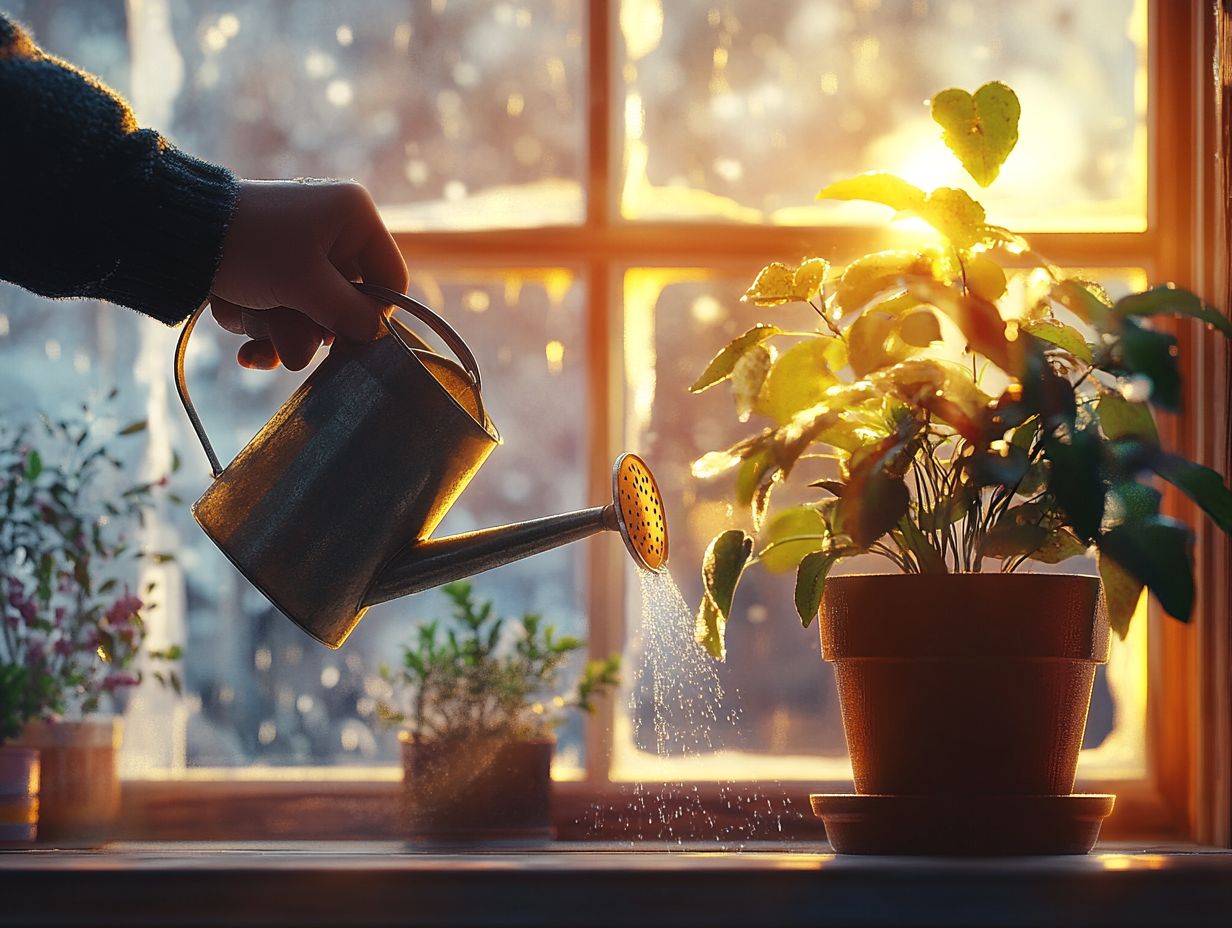
Protecting your plants from frost and freezing temperatures is essential for their survival during harsh winter months. Implement effective strategies to shield them from these elements to maintain stable moisture levels and prevent dehydration.
Providing protective coverings is vital during extreme weather. Familiarize yourself with how well your specific plants handle frost and adjust your watering practices to bolster their resilience against winter chills.
Tips for Preventing Damage to Plants
To prevent damage to your plants during frosty and freezing events, ensure that established plants receive enough water throughout winter. This significantly boosts their resilience against the cold.
Incorporate mulch around the base of your plants; it helps retain moisture and regulates soil temperature, adding an extra layer of defense against freezing conditions. On warmer, sunny days in late fall, give your plants a good drink to allow their roots to absorb moisture before the ground freezes solid.
For delicate species, use frost blankets or cloches, which can be easily removed on milder days to prevent overheating. Regularly check soil moisture levels to ensure your plants stay adequately hydrated, promoting their health and ability to withstand harsh winter months.
With these thoughtful considerations, you can greatly enhance the chances of your garden thriving come spring.
Frequently Asked Questions
-
How can I water my plants effectively during winter?
- Water infrequently: Plants tend to enter a dormant state in winter and require less water. Water them only when necessary to avoid overwatering.
- Water in the morning: The best time to water is in the morning, allowing the water to soak into the soil before it freezes at night.
- Avoid watering when it s freezing: Watering below freezing can damage roots and cause them to die.
-
How can I avoid overwatering my plants during winter?
- Use a moisture meter: Investing in a moisture meter helps determine soil moisture levels.
- Check the soil before watering: Insert your finger into the soil. If it feels moist, there s no need to water.
- Use a watering can: A watering can gives you more control over the amount of water you provide to your plants.
Start your winter plant care today and watch your garden thrive!

